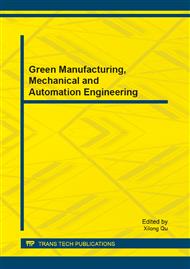p.937
p.942
p.947
p.952
p.957
p.961
p.966
p.971
p.975
Non-Point Source Pollution Control Effect Based on Comprehensive Management of Small Watershed
Abstract:
The urban surface runoff pollution is the most important type of urban non-point source pollution, random, wide area complex composition. The Beijing small watershed non-point source pollution comes mainly from the release of water, livestock and aquaculture, urban sewage waters, sediment release, aquatic organisms corruption farmland tail, rural solid waste and agricultural by-products pollution. Over the years these small watershed comprehensive management, significant effects of non-point source pollution control. It's mainly from non-point source pollution characteristics, hazards, main control practices begins to explain the effect of small watershed pollution in recent years, Beijing's governance, and governance prospects.
Info:
Periodical:
Pages:
957-960
Citation:
Online since:
July 2013
Authors:
Price:
Сopyright:
© 2013 Trans Tech Publications Ltd. All Rights Reserved
Share:
Citation:


